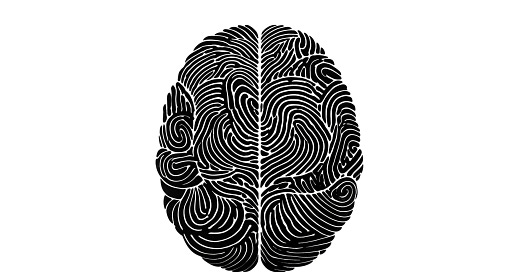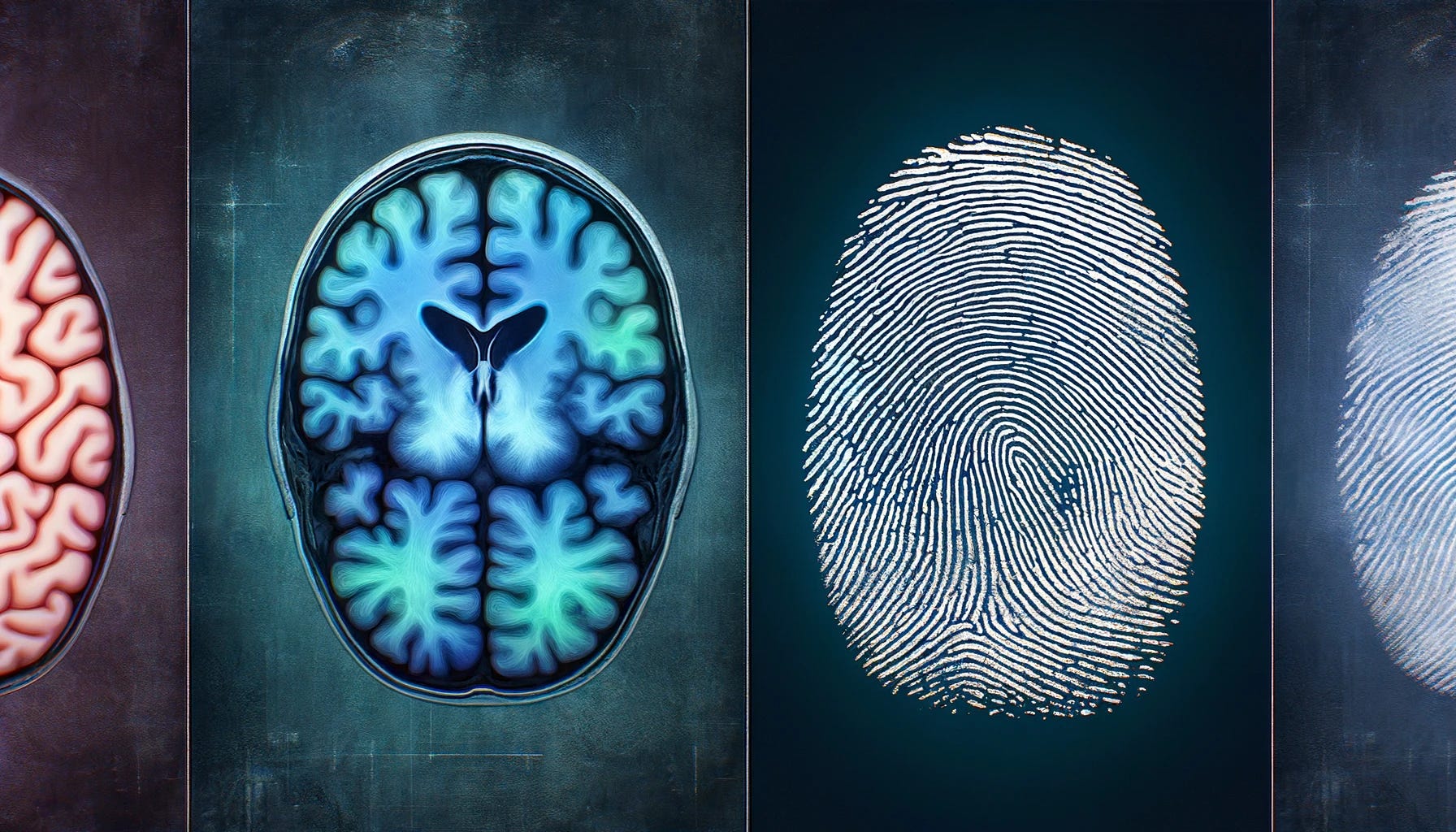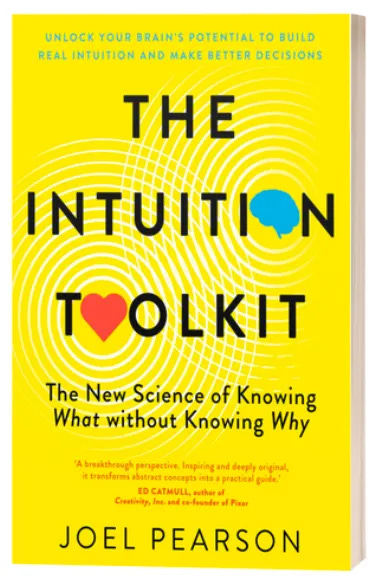Think Different: Unleashing the Benefits of Neurodiversity
Curated, Science-Driven Insights into the Brain.
Future Minds newsletter breaks down the science of the mind and brain into short and easy-to-digest insights and actionable take-homes. Sign up and join the many others who receive it directly in their inbox.
What is neurodiversity? The best way to think about neural diversity is that your brain and the way it operates can be placed on a distribution, like a bell curve from our school and university days. The majority of people with more or less similar brain structures will fall in the centre of the bell curve, while those with less common structures or dynamics will fall on the two tails of the distribution. Those on these tails are typically who we refer to when discussing neurodiversity. Simple! end of the newsletter!
The most common examples of neurodiversity people refer to are autism and Asperger's, but we could also include aphantasia or hyperphantasia in this natural distribution of cognitive and neural diversity. While using the phrases "cognitive diversity" and "neural diversity," one simply refers to the cognitive capacities and thinking styles in our minds (cognitive diversity), while neural diversity refers to the underlying neural structures. Typically, we tend to see these two things go together, meaning that when you have neural diversity, it will translate into cognitive diversity in different ways of thinking, remembering, or feeling emotions. For example, a good illustration of neural diversity is when we look at the visual cortex.
Across the population, we see that the visual cortex can be up to four times larger in some people than in others. You've all seen these pictures of the wrinkled cerebral cortex, the brain's outer shell. When we measure the size of that area by mapping it in an fMRI scanner and flattening it out, one person's visual cortex size could be four times larger than someone else's – a great example of neural diversity or differences in brain structures. Cognitive diversity would be how these brain structures translate or are related to differences in the way we think, perceive, or remember.
These differences in brain sizes and structures seem to directly relate to differences in perception, perceptual sensitivity, the strength of mental imagery (especially visual imagery), how sensitive we are to various visual illusions, and probably many other things. In other words, there's a fairly direct relationship between neural diversity and cognitive diversity.
But before we make any big calls on this, let's dig a bit deeper into this whole idea of our brains being as telling as fingerprints.
Spread the word, and share the knowledge! Forward this newsletter to empower others with fresh insights and ideas.
Size does matter, but not in the way you might think
Let’s talk about one of my favourite parts of the brain the visual cortex. This part of the brain is where the magic of vision happens. But as I wrote above, this brain area can be quite different among individuals—up to four times larger in some than in others! And yes, size does matter here, but not in the way you might think.
For a long time, researchers have scratched their heads over how this variation affects the way we imagine and perceive the world. Well, it turns out that people with a smaller visual cortex have stronger mental imagery.
Interestingly it's the opposite when it comes to visual perception and imagery. Individuals with a larger visual cortex are actually more sensitive to subtle perceptual differences. Larger is ‘better’ when it comes to perception, but it’s the opposite with imagery. So to reiterate, a smaller visual cortex is related to stronger mental imagery, and it's the exact opposite when it comes to visual perception, those with a smaller visual cortex are less sensitive to perceptual changes.
“Smaller visual cortex is related to stronger mental imagery, and it's the exact opposite when it comes to visual perception ”
Now, don't confuse the strength of your mental images with their precision. Imagine strength as the volume of your mental radio—it's about how loud your images are in your mind. Precision, on the other hand, is about the fine-tuning of that radio—how detailed and accurate those images are. Our findings suggest that those with larger visual cortices might not have the strongest mental imagery, but it tends to be more precise.
“Those with larger visual cortices might not have the strongest mental imagery, but it tends to be more precise. .”
These findings are interesting because they are clear examples of how our anatomy the shapes and sizes of our brains, directly relate to who we are, how we think and how we perceive the world. We're also seeing some related trends when it comes to neurological diseases. Interesting data shows that those with schizophrenia have a much smaller visual cortex compared to the rest of their brains. It's also been documented that those with schizophrenia tend to have stronger mental imagery. Now these are just trends that I wanted to point out here and if you have strong mental imagery there's no reason to be alarmed and think that you might have schizophrenia, these are just trends we see across the data.
Neurodiversity and the Workplace
There's been much ongoing debate about the potential costs of neurodiversity in the workplace. But it's interesting to think about the upside as well. For example, if we think about jobs like first responders, medical, firefighters or military work, which can put people in extreme environments, the data linking strong mental imagery to a higher probability of getting PTSD and more traumatic PTSD, suggest that those with aphantasia, all else being equal, would be less likely to suffer from anxiety or PTSD working in these fields. In other words, having aphantasia in these jobs would be seen as an advantage over anyone with mental imagery (we don't actually have direct data on this yet).
For instance, a firefighter with aphantasia should be less likely to develop anxiety or PTSD after attending an emergency event and saving lives in a fire. This is just one example of aphantasia, but it generalises more broadly to all dimensions of neural diversity. In the workplace, it can be a huge advantage to have cognitive diversity, having people who think in different ways and approach problems and their solutions very differently can boost innovation and bring tremendous benefits.
Temple Grandin is another example of someone who has brought amazing innovations, seemingly due to her different way of thinking and how her brain operates. Time magazine named her in its list of the 100 most influential people in the world under the "Heroes" category. She has been the subject of award-winning documentaries and has changed how the livestock industry treats animals.
Neurodiverse employees bring a lot of advantages to any company. Think turbocharged information processing, out-of-the-box creativity, and problem-solving skills. Studies even show they're more productive and innovative than their neurotypical counterparts. But here's the thing – neurodiverse individuals often face a tough time getting hired and staying in the job once they're in.
Companies can make a real difference by stepping up their game. Start with things like employee resource groups, where individuals can connect and support each other. Also, don't forget to educate everyone about neurodiversity – it's not rocket science, but it makes a world of difference.
At the end of the day, it's not just about being nice – although that's important too. Embracing neurodiversity isn't just the right thing to do; it's smart business. It boosts productivity, innovation, and morale. And let's face it, in today's world, that's a win-win for everyone.
Mental Meanderings
Should companies be required to measure and balance neural or cognitive diversity in the same way they do for race or gender? Is this the next frontier for equality, or a step too far?
Do you think of yourself as neural or cognitively divergent? If so do you like this and wear it as a badge of honour?
What future ideas do you have to measure and integrate these often hidden types of diversity into the workforce? Social groups or family?













I love your positive outlook on cognitive/neural diversity and educating the workplace about it. I think there also needs to be a lot of work done around this in the educational system. In the US, there is support, but it usually is support to fit into the neurotypical box rather than support their strengths in out of the box thinking and processing. I had to pull my neurodiverse kids out of school as it was doing more harm than good trying to fit them in the box. Now they can focus on their strengths. Thanks for bringing up such important matters!
Multisensory aphantantasia, dyspraxia, familial hyper-fight/flee SNS response, red flagged auto-immune Gene profile. I bundle all these together as I strongly sense that they overlap. Neural functioning is so intensely intertwined it cannot fit into scientific boxes.
Cognitively divergent ‘sounds’ better than neural. But my brain/body is what it is. I am what I am, as well as who I am, both also entwined. No cause for pride or for dismay. But it is wonderfully enlightening to now be able to analyse and understand why I have always felt like a round peg in a square hole.
I find few people really interested in this stuff. Most have never stopped to think about how their mind functions and can struggle to go there. Thank you, 😊 Roseann